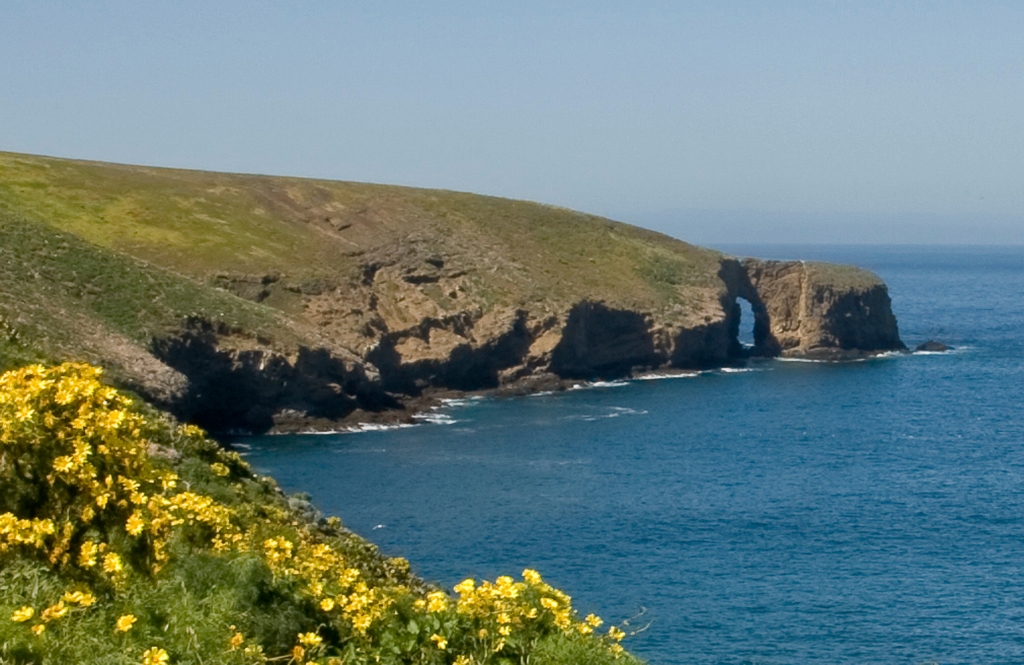
This one-mile, round trip hike from the visitor center offers wildflowers in season and great coastal views of Arch Point. This arch on the northeast shore of the island is a 130 ft tall and was created by wave erosion of fault weakened rock.
Stop 4: Arch Point Tour-Return of the Natives
As you walk the island, you may notice the fields of grains and grasses that dominate the landscape. This was not always the case. What was once an island covered with coastal sage and bluff scrub, maritime cactus scrub, and native grasslands, has given way to nonnative, European grazing grasses and an assortment of weeds, including iceplants, oats, bromes, foxtails, thistles, and mustard. Today, about a third of the plant species found on Santa Barbara Island are nonnative.
During the early 1900s, native vegetation was cut, burned, and plowed for farming. In addition, sheep, goats, and rabbits severely overgrazed the island, eliminating most of the native vegetation and creating open, disturbed, and eroded soils that allowed nonnative plants to flourish. Once established, these hardier nonnatives outcompeted the natives for limited soil and moisture, due to their longer germination and growth cycles and ability to withstand grazing and browsing by livestock.
The NPS is working to restore the island's native vegetation, and special focus is being placed on the 14 plants endemic to the islands-those found nowhere else in the world. Four of these occur only on Santa Barbara Island: the Santa Barbara Island live-forever, buckwheat, cream cups, and island chicory. To ensure the survival of these unique species and encourage the recovery of the island's native vegetation, all non-native animals have been removed and the effort to plant native species and control nonnative weeds is underway.
The recovery of native plants has so far been remarkable. Many are now spreading beyond the buried seed banks and steep canyon walls and cliffs, where they remained protected from grazing, and are reestablishing themselves slowly throughout the island.
This reestablishment of native plants has also aided in the recovery of endemic deer mice, night lizards, and nesting land birds by providing important habitat. Today, there are 14 land birds that nest annually on the island. Three of these-the horned lark, orange-crowned warbler, and house finch-are endemic subspecies found only on Santa Barbara Island.
Unfortunately, the island's recovery did not come soon enough for the endemic Santa Barbara Island song sparrow, one of the smallest forms of song sparrow and differentiated from its mainland relative by its very gray back. The destruction of this sparrow's sagebrush and coreopsis nesting habitat and the presence of feral cats led to the extinction of this species in the 1960s. It is now lost forever.
However, ecological restoration has helped populations of the endemic island night lizard recover to the point that it was removed from the Federal List of Threatened and Endangered Wildlife in 2014. This species only occurs on Santa Barbara, San Nicolas, and San Clemente Islands.
You can help with this recovery of island natives by cleaning your boots and other possessions, such as backpacks, before you visit. This ensures that you don't accidentally introduce nonnative species to the island. Together we can guarantee the return of native plants and animals throughout Santa Barbara Island.
Is there something we missed for this itinerary?
Itineraries across USA


















































